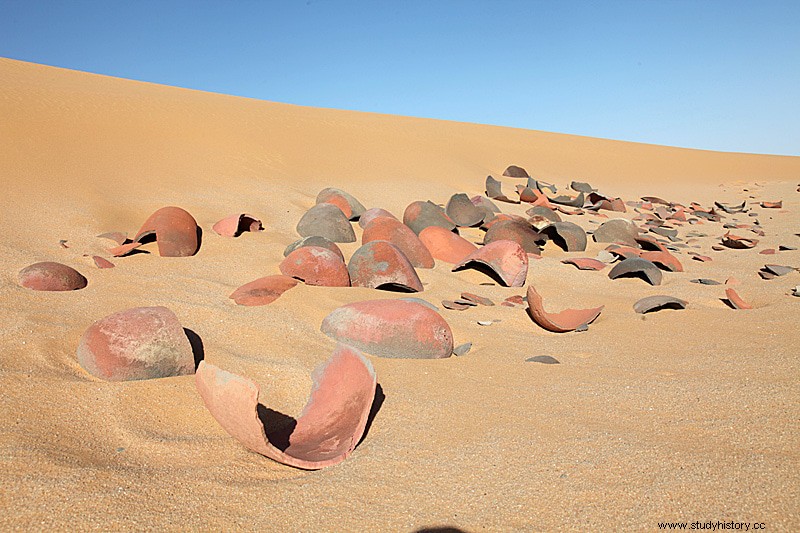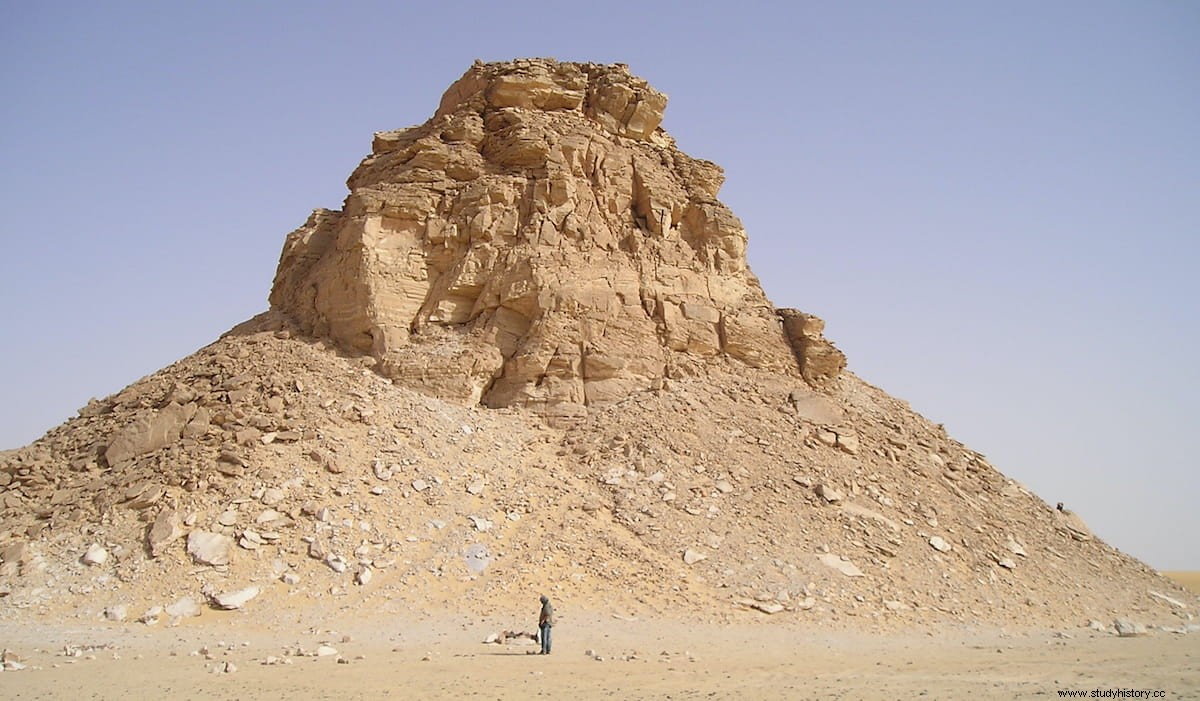In 1917 the British surveyor John Ball made an unusual discovery in the Libyan desert in Egypt. Some 180 kilometers southwest of the Dakhla Oasis he found two isolated sandstone cones jutting out of the desert sand.
Both hills were covered with thousands of jars and other ceramic pieces, many of them broken but some still intact.
The Egyptian explorer prince Kamal el Dine Hussein named the archaeological site Abu Ballas, or pottery hills . He believed that the vessels were remnants of fairly modern times and that the markings engraved on them belonged to the Bidayata tribes, but radiocarbon dating in the late 20th century revealed that some of the ceramics are between 3,500 and 4,000 years old. /p>
The pots were obviously made to hold water, but there are no water sources nearby, meaning they were transported from the Dakhla oasis, perhaps to create a water reservoir in the middle of the desert.
German explorer Carlo Bergmann believes that Abu Ballas was one in a long line of water reservoirs that stretched more than 300 kilometers from the Dakhla oasis along the eastern edge of the Gilf Kebir plateau, but where that led trail is a mystery.

Some researchers maintain that the trail was an ancient Egyptian trade route to central Africa, established in the late Old Kingdom or early First Intermediate Period. Some time after its creation, the authorities decided to organize supply depots along the road. Abu Ballas would be one of the greatest.
When Abu Ballas was discovered, there were thousands of pots stacked in neat layers around the base of the hills. Now there are only a few hundred left.
Many pieces have disappeared at the hands of tourists in search of souvenirs. Others were destroyed and pottery shards can still be seen in the sand around the hills.

This article was published in Amusing Planet. Translated from English and republished with permission.
